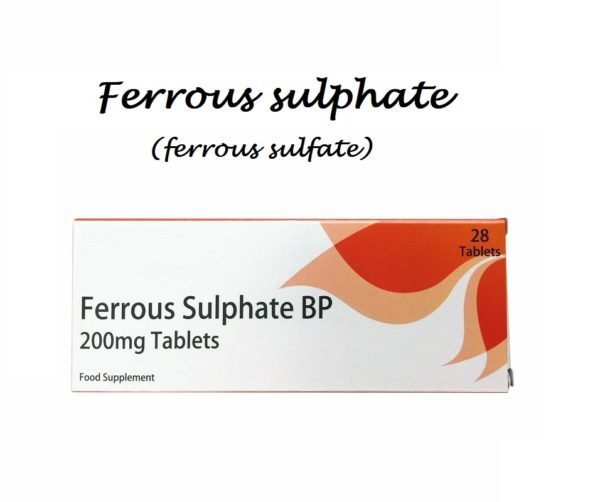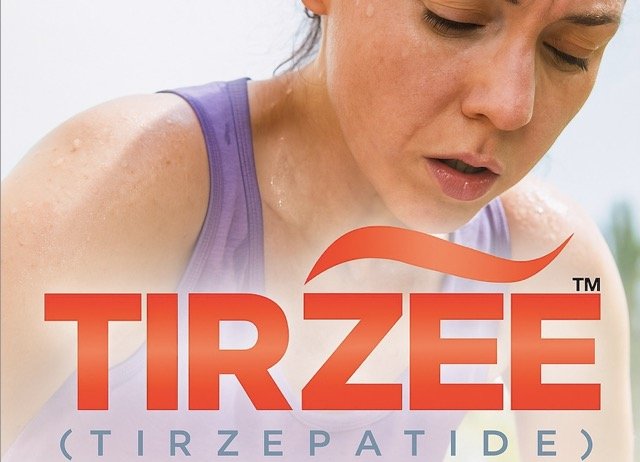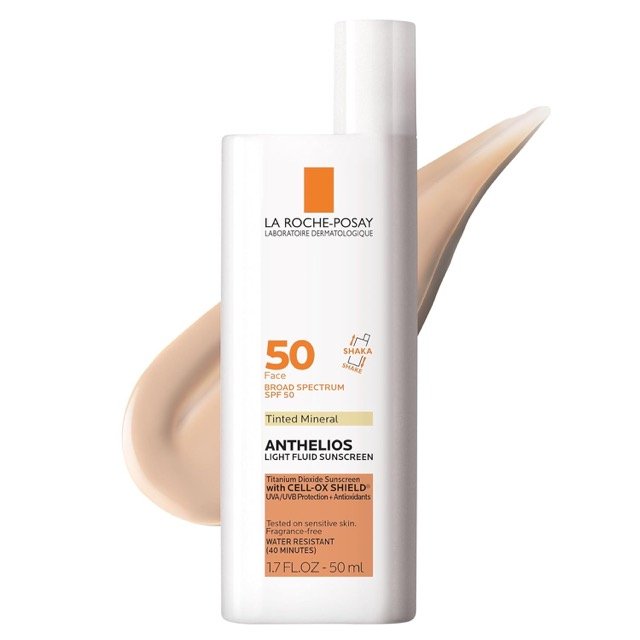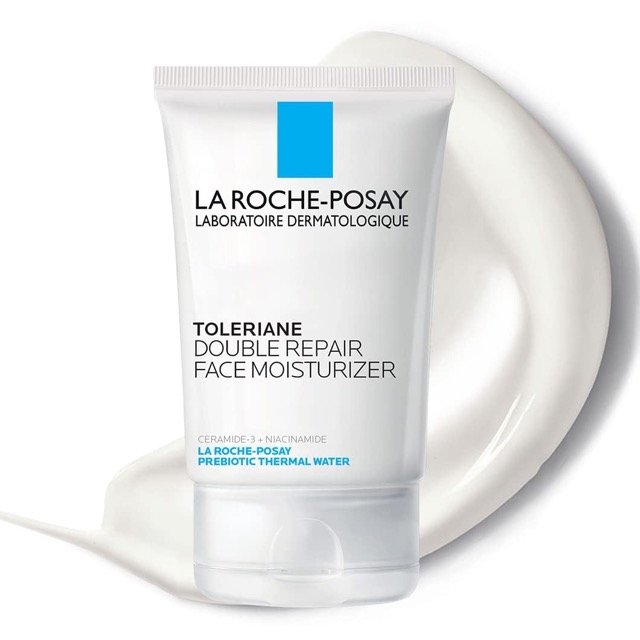Ferrous sulphate (ferrous sulfate) contains iron that is essential for hemoglobin synthesis. It is also required for the muscles and other enzymes for optimal functioning.
Indications of Ferrous sulphate:
-
Iron-deficiency anemia:
- It is suggested for the management of iron-deficient anemias.
-
Off Label Use of Ferrous Sulfate in Adults:
- Its use is also helpful in restless legs syndrome.
Ferrous sulphate treatment dosage in adults:
Note:
- This is applicable to both children and adults.
- Ferrous sulfate is present in various oral liquid concentrations.
- Ordering and administering ferrous sulfate requires notice of concentration.
- Choosing the wrong ferrous sulfate liquid or switching it out for another one without adjusting the dose amount properly might result in deadly over- or underdosing.
- Iron deficiency anemia is preferably treated with immediate-release oral iron products.
- Poor absorption is seen in the case of enteric-coated and slow/ sustained-release preparation.
- In terms of elemental iron, doses are stated.
Around 20% of the iron in ferrous sulfate is elemental iron.
- 30% of the elemental iron is found in dried ferrous sulfate.
In places where anemia incidence is 40%, the following off-label therapy dose for ferrous sulphate is recommended:
Ladies who are not pregnant and of childbearing age:
- 30 to 60 mg taken orally once a day for three months in a row.
Ferrous sulphate treatment dosage for Iron-deficiency anemia:
- 65 to 200 mg per oral per day.
- It can be given in three divided doses (depending on formulation).
- Note: Greater absorption of iron is seen with alternate-day dosing.
- This dosing is recommended for patients who can maintain adherence.
Ferrous sulphate treatment dosage of Restless legs syndrome (off-label):
- In individuals with a ferritin level below 75 mcg/L, 65 mg per oral (325 mg ferrous sulfate) given every 12 hours together with vitamin C is recommended.
Ferrous sulphate therapy dosage in children
For the treatment of iron deficiency anemia in children, the following dosage of ferrous sulphate is recommended:
-
Children and infants under the age of 2 in locations where the prevalence of anemia is more than 40%:
- In a year, take 10 to 12.5 mg orally once every day for three consecutive months.
-
Babies under 4 months (who get human milk exclusively or more than 50% of their intake without iron-fortified food):
- 1 mg per kg of iron every day.
- Note: If breastfed, additional iron supplementation is not advised for full-term infants until they are at least 4-6 months old (full or partial).
-
Children aged 2 to 5 years in places where the prevalence of anemia is more than 40%:
- In a year, take 30 mg orally three times each day.
-
Children aged 5 to 12 who live in locations with a higher than 40% anemia prevalence:
- For three months in a row, take 30 to 60 mg of oral medication daily.
-
Teenage menstruation girls (females with reproductive potential who are not pregnant) in places where the frequency of anemia is more than 40%:
- For three months in a row, take 30 to 60 mg of oral medication daily.
Ferrous sulphate dosage for the therapy of iron deficiency:
-
Infants, Children, and Adolescents:
- 3 to 6 mg per kg per day, split into three doses
- The daily dosage cap is set at 200 mg.
Ferrous sulphate pregnancy Risk Factor: B
- An increased need for iron is seen during pregnancy.
- No matter the maternal iron status, sufficient fetal iron may be maintained, with the exception of severe cases of anemia.
- Iron deficiency can result in negative outcomes including low birth weight, premature births, or increased perinatal death if it is not addressed.
- For female antenatal who are not pregnant, iron insufficiency can be addressed in the same manner.
- The majority of research demonstrates that iron treatment improves maternal hematologic parameters. There aren't many clinical outcome statistics available for the mother and the newborn, though.
- Parenteral iron treatment may be necessary if a female is unable to accept oral iron, has a history of iron deficiency, or has a history of malabsorption.
- The ideal iron supplement during pregnancy is iron sulfate.
- Preparations with an enteric coating and those with a slow/sustained release are less effective.
Ferrous sulfate use during breastfeeding:
- Breast milk contains iron.
- Increased iron supplementation is required for breastfeeding women (IOM 2001).
- Iron is still present in breast milk in women with mild to moderate iron deficiencies. However, this is markedly reduced in severe iron deficiency.
- Breast milk with higher iron content is likely to be produced by mothers who have used ferrous sulfate.
- Breastfeeding infants were not exposed to adverse events, even when the mother used ferrous sulfate in supplemental dosages.
- In various trials, ferrous sulfate was evaluated for the treatment of iron deficiency anemia postpartum.
- The compatibility of ferrous salts used to treat anemia with breastfeeding has been shown by the WHO in 2002.
- According to WHO guidelines, postpartum women who are at high risk for gestational anemia (whether they are nursing or not) should take oral iron pulse/folic acid 6-12 weeks after giving birth to lower the chance of developing anemia. (WHO 2016c).
Ferrous sulfate dose in Kidney disease:
- No specific dosage adjustment has been mentioned.
- A trial of oral iron replacement is justified and can be continued if the patient is responding (in iron-deficient individuals).
- intravenous iron may be preferred especially in patients who are intolerant or who do not respond to a trial of oral iron replacement.
Ferrous Sulphate Dose in Liver disease:
- Dose adjustment in patients with liver disease has not been mentioned.
- However, it can be administered in liver disease if no contraindications exist.
Ferrous sulfate Side Effects:
-
Gastrointestinal:
- Darkening Of Stools
- Abdominal Pain
- Heartburn
- Nausea
- Constipation
- Flatulence
- Vomiting
- Diarrhea
Contraindication to Ferrous sulfate:
- Hypersensitivity to iron salts and any component of the formula
- hemochromatosis,
- Hemolytic anemia can be a contraindication to iron salts prescribing.
Warnings and precautions
-
Gastrointestinal Disease:
- It is not recommended for patients with peptic ulcers, enteritis, and ulcerative colitis.
Ferrous sulfate: Drug Interaction
Note: Drug Interaction Categories:
- Risk Factor C: Monitor When Using Combination
- Risk Factor D: Consider Treatment Modification
- Risk Factor X: Avoid Concomitant Use
| Risk Factor C (Monitor therapy) | ||
| Histamine H2 Receptor Antagonists | May decrease the absorption of Iron Salts. | |
| Proton Pump Inhibitors | May decrease the absorption of Iron Salts. | |
| Risk Factor D (Consider therapy modification) | ||
| Alpha-Lipoic Acid | Iron salts may make it harder for alpha-lipoic acid to be absorbed. The absorption of iron salts may be decreased by alpha-lipoic acid. | |
| Antacids | could make it harder for iron salts to be absorbed. | |
| Bictegravir | Bictegravir's serum levels may be reduced by iron salts. Treatment: Under fed settings, bictegravir, emtricitabine, and tenofovir alafenamide can be provided with iron salts; however, under fasting conditions, coadministration with or two hours after an iron salt is not advised. | |
| Bisphosphonate Derivatives | Items containing polyvalent cations may lower the level of bisphosphonate derivatives in the serum. Treatment: It is best to delay taking oral drugs containing polyvalent cations for at least 2 hours before or after taking tiludronate, clodronate, or etidronate, 60 minutes after taking oral ibandronate, or 30 minutes after taking alendronate or risedronate. Pamidronate and zoledronic acid are exceptions. | |
| Cefdinir | Iron salts may lower the level of cefdinir in the blood. The development of an insoluble iron-cefdinir complex can also result in the development of red-looking, non-bloody feces. Management: When feasible, avoid taking oral iron and cefdinir at the same time. Several hours between doses may help reduce interaction. Cefdinir does not appear to interact with newborn formulae that include iron. | |
| Deferiprone |
|
|
| Dolutegravir | Dolutegravir's serum levels may be lowered by iron salts. Treatment: Dolutegravir should be administered at least two hours before or six hours after oral iron. Dolutegravir and rilpivirine should be administered at least 4 hours before or 6 hours after oral iron salts. Oral iron and dolutegravir can also be taken along with meals. | |
| Eltrombopag | Items containing polyvalent cations may lower the serum concentration of eltrombopag. Treatment: Provide eltrombopag at least two hours before or four hours after taking any oral medication containing polyvalent cations. | |
| Entacapone | Entacapone's serum levels may drop if you take iron salts. To reduce the effects of this interaction, think about giving the drugs two or more hours apart. During concurrent therapy, keep an eye out for any diminished therapeutic benefits of levodopa, especially if doses cannot be separated. | |
| Ferric Hydroxide Polymaltose Complex |
|
|
| Iron Isomaltoside | may lower the level of iron salts in the serum. Particularly, oral iron salt absorption may be diminished. Management: Avoid combining other oral iron salts with intravenous (IV) iron isomaltoside. Five days following the final IV dosage of iron isomaltoside, the patient should start oral iron salt therapy. | |
| Levodopa | Levodopa serum levels may be reduced by iron salts. only applies to iron formulations used orally. To reduce the effects of this interaction, think about giving the drugs two or more hours apart. During concurrent therapy, keep an eye out for any diminished therapeutic benefits of levodopa, especially if doses cannot be separated. | |
| Levothyroxine | Levothyroxine's serum levels may drop if you take iron salts. Treatment: Provide levothyroxine and iron salts at least 4 hours apart when taking them orally. Levothyroxine or iron salts given parenterally don't require dosage separation. | |
| Methyldopa | Methyldopa serum levels may be reduced by iron salts. | |
| PenicillAMINE | Items containing polyvalent cations may lower the level of penicillAMINE in the serum. Treatment: Provide oral medications containing polyvalent cations and penicillamine at least an hour apart. | |
| Phosphate Supplements | Iron salts may make it harder for phosphate supplements to be absorbed. To lessen the impact of this interaction, administer oral phosphate supplements as widely apart as you can from the administration of an oral iron salt. Sodium Glycerophosphate Pentahydrate is an exception. | |
| Quinolones | Quinolones' serum concentration may be lowered by iron salts. Treatment: Provide oral quinolones at least several hours before (four hours for moxi- and sparfloxacin, two hours for others) or after (six hours for cipro/dela-, four hours for lome-, three hours for gemi-, and two hours for levo-, nor-, oflox-, pefloxacin, or nalidixic acid) taking oral iron salts. Exceptions: LevoFLOXacin (Oral Inhalation) (Oral Inhalation). | |
| Tetracyclines | could make it harder for iron salts to be absorbed. Tetracyclines' serum levels may drop if you take iron salts. Eravacycline is an exception. | |
| Trientine | Items containing polyvalent cations may lower the level of trientine in the serum. Management: Steer clear of combining the use of oral medications containing polyvalent cations with trientine. If you need to take oral iron supplements, space out the administration by two hours. Separate delivery of additional oral polyvalent cations by one hour if necessary. | |
| Risk Factor X (Avoid combination) | ||
| BaloxavirMarboxil | Polyvalent Cation Containing Products may decrease the serum concentration of BaloxavirMarboxil. | |
| Dimercaprol | May enhance the nephrotoxic effect of Iron Salts. | |
Monitoring parameters:
Iron deficient anemia:
- Hemoglobin and hematocrit/ RBC count/ RBC indices/ serum ferritin/ transferrin saturation, total iron-binding capacity/ serum iron concentration/ erythrocyte protoporphyrin concentration should be monitored.
Cancer and chemotherapy-induced anemia:
- It is advised to assess the levels of ferritin (baseline and periodic), serum iron, total iron-binding capacity, transferrin saturation, and iron.
Chronic kidney disease-associated anemia (patients not on dialysis):
- Hemoglobin/ serum ferritin/ transferrin saturation is required to evaluate response to iron.
How to administer Ferrous sulfate?
- Extended-release oral preparations should not be chewed or crushed.
- The tablet should be taken with water or juice on an empty stomach.
Ferrous sulfate Mechanism of Action:
- Ferrous sulphate is a form of iron that can be replaced by hemoglobin/myoglobin/ enzymes.
- This allows for oxygen transport via hemoglobin.
Start of action
- After oral administration, the hemologic response is approximately 3-10 days.
Peak effect:
- Reticulocytosis can be seen in between 5-10 days. Hemoglobin levels increase within 2-4 weeks
Absorption:
- Iron is absorbed in the upper and duodenum. 10% of the oral dose is absorbed by people who have normal iron stores.
- This is increased to 20%-30% for patients with depleted iron. Food and achlorhydria decrease absorption.
Protein binding:
- To transferrin.
Excretion:
- Urine and sweat. Sloughing of intestinal mucosa. Menses.
Ferrous sulfate Brand Names (International):
- BProtected Pedia Iron
- Fer-In-Sol
- Fer-Iron
- FeroSul
- Ferro-Bob
- FerrouSul
- Iron Supplement Childrens
- Iron Supplement
- Slow Fe
- Slow Iron
- PMS-Ferrous Sulfate
- Aktiferrin
- Brisofer
- Conferon
- Duroferon
- Eribell
- Femas
- Feosol
- Feospan
- Feospan Z
- Fer-In-Sol
- Ferglobin
- Ferlea
- Fero-Gradumet
- Feroba
- Feromin
- Feromin Oral Drops
- Ferro Duretter
- Ferro-grad
- Ferro-Gradumet
- Ferro-Liquid
- Ferrogamma
- Ferrogard
- Ferrograd
- Ferrograd C
- Ferrogradumet
- Ferrolent
- Ferrophor
- Ferroplex ”Era”
- Ferrostatin
- Ferrosterol
- Fersulph
- Haemoprotect
- Hemobion
- Iberol Drops
- Inshel
- Irovit
- Kdiron
- Kidiron
- Liquifer
- Microfer
- Mol-Iron
- Pediafer
- Pharmafer
- Plastufer
- Plexafer
- Retafer
- Slow-Fe
- Sorbifer
- Tardyferon
- Valdefer
Ferrous Sulphate Brand Names in Pakistan:
Ferrous Sulphate Drops 125 mg/ml |
|
| Fer-In-Sol | Progressive Laboratories |
| Iberet | Abbott Laboratories (Pakistan) Limited. |
Ferrous Sulphate Syrup 100 mg/5ml |
|
| F.S | Stanley Pharmaceuticals (Pvt) Ltd. |
| Fer-In-Sol | Progressive Laboratories |
| Ferrosil | Sharex Laboratories (Pvt.) Ltd. |
| Ferrosil | Sharex Laboratories (Pvt.) Ltd. |
| Ferrous Sulphate | Mian Brothers Laboratories (Pvt) Ltd. |
| Vitagro | Albro Pharma |
Ferrous Sulphate 200 mg tablets |
|
| Femorate | Valor Pharmaceuticals |
| Fer-In-Sol | Progressive Laboratories |
| Fer-In-Sol | Progressive Laboratories |
| Ferfate | Alfalah Pharma (Pvt) Ltd. |
| Ferrous Sulphate | P.D.H. Pharmaceuticals (Pvt) Ltd. |
| Ferrous Sulphate | Xenon Pharmaceuticals (Pvt) Ltd. |
| Ferrous Sulphate | Xenon Pharmaceuticals (Pvt) Ltd. |
| Ferrous Sulphate | Albro Pharma |
| Ferrous Sulphate | Geofman Pharmaceuticals |
| Ferrous Sulphate | Albro Pharma |
| Ferrous Sulphate | P.D.H. Pharmaceuticals (Pvt) Ltd. |
| Ferrous Sulphate | Dosaco Laboratories |
| Fersul | Nabiqasim Industries (Pvt) Ltd. |
| Fumolic | Munawar Pharma (Pvt) Ltd. |
| Unifer | Unison Chemical Works |
Ferrous Sulphate 150 mg Capsules |
|
| Fenim | Hizat Pharmaceutical Industries (Pvt) Ltd. |
| Forceful | Universal Pharmaceuticals (Pvt) Ltd |
| Vitafferol | Hizat Pharmaceutical Industries (Pvt) Ltd. |








